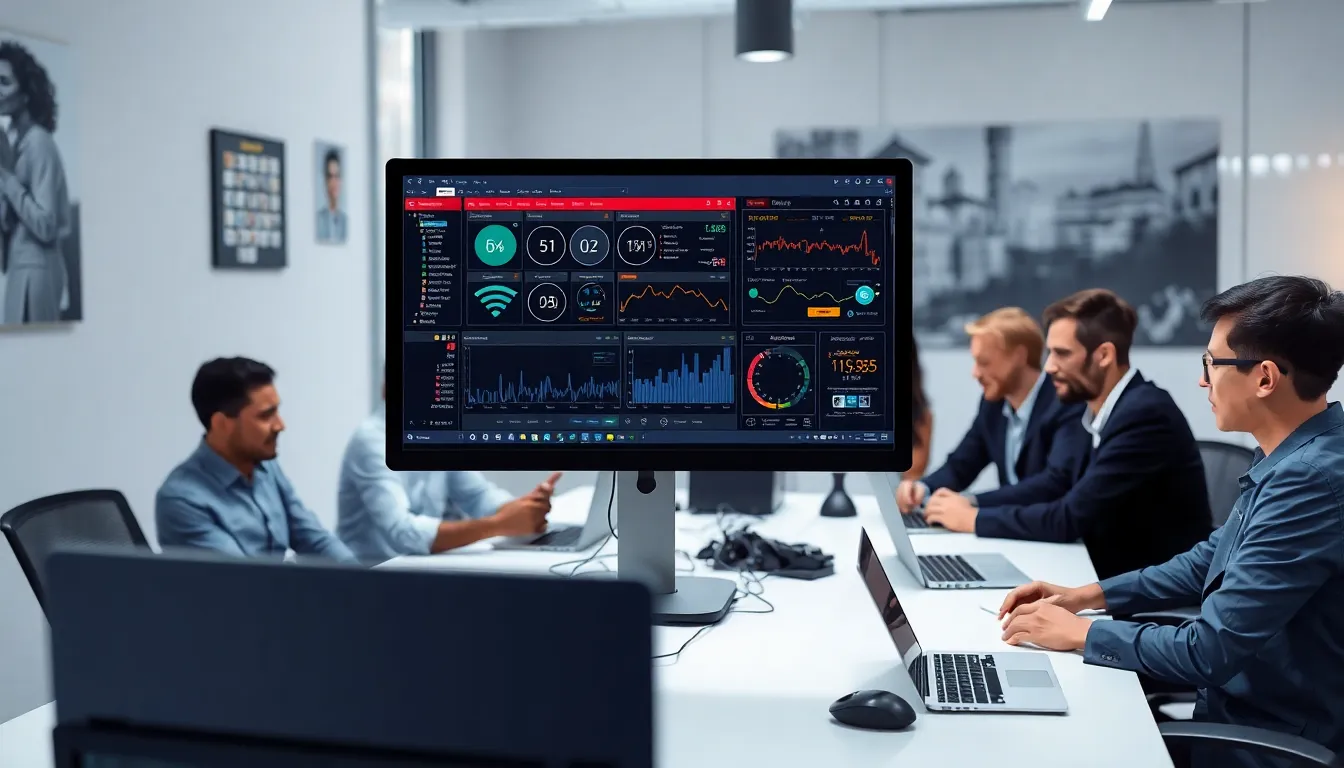Table of Contents
ToggleIn a world where cyber threats lurk around every digital corner, cybersecurity software is like a superhero cape for your devices. Imagine your laptop donning a shiny suit of armor, ready to fend off pesky hackers and malware with a flick of its virtual wrist. It’s not just a luxury—it’s a necessity.
Every click you make could be a potential invitation for cyber villains. But fear not! The right cybersecurity software can transform your tech from vulnerable to invincible. With a blend of advanced protection and user-friendly features, it’s time to give your digital life the shield it deserves. After all, who wouldn’t want to surf the web without the constant fear of cyber ninjas lurking in the shadows? Let’s dive into the world of cybersecurity software and discover how it can keep your online kingdom safe and sound.
Overview of Cybersecurity Software
Cybersecurity software plays a critical role in safeguarding devices from various cyber threats. These tools protect computers and networks from attacks, malware, and unauthorized access. Effective cybersecurity software includes essential features like antivirus protection, firewalls, and intrusion detection systems. Each of these elements works together to create a layered security approach.
Antivirus solutions detect and eliminate harmful software. Firewalls act as barriers that filter incoming and outgoing traffic, blocking malicious data. Intrusion detection systems monitor system activities for signs of threats. Together, these functionalities provide comprehensive coverage against evolving cyber risks.
According to industry reports, 43 percent of cyber attacks target small businesses, making reliable cybersecurity software essential for organizations of all sizes. Investing in such software not only shields sensitive data but also restores confidence in online operations.
Leading cybersecurity software options on the market include names like Norton, McAfee, and Bitdefender. These solutions offer varied features tailored to specific user needs. For individuals, user-friendly interfaces and household protection may be prioritized. Larger enterprises may focus on advanced threat detection and incident response capabilities.
Overall, each cybersecurity software offers distinct advantages, making it crucial to assess specific requirements before selecting a solution. Understanding how these tools function leads to informed choices in protecting digital assets.
Types of Cybersecurity Software

Cybersecurity software includes various tools that work together to protect devices from threats. Each type serves a specific function in the overall security framework.
Antivirus Software
Antivirus software scans devices for malware and removes harmful programs. Leading solutions identify and neutralize viruses, spyware, and ransomware. It’s essential to keep this software updated, as new threats emerge daily. Installation of antivirus software not only protects devices but also enhances overall system performance through regular scans and real-time monitoring. Many reputable options offer additional features, like web protection and email scanning, to further safeguard users from cyber threats.
Firewall Software
Firewall software monitors network traffic and blocks unauthorized access. This software acts as a barrier between internal networks and external threats. Configuring firewall settings can optimize security based on specific needs. Many businesses rely on hardware firewalls alongside software options for layered protection. Solutions vary from built-in operating system firewalls to advanced proprietary systems, meeting diverse security requirements.
Intrusion Detection Systems
Intrusion detection systems (IDS) analyze network traffic for suspicious activities. Alerts trigger when potential threats arise, allowing immediate investigation and response. IDS helps organizations detect breaches early, minimizing damage. Implementing these systems supports overall security strategies, especially for larger networks with critical data. This proactive approach significantly reduces the likelihood of successful cyber attacks.
Encryption Tools
Encryption tools protect sensitive data by converting it into unreadable formats. This process ensures only authorized users can access confidential information. Businesses often use encryption for data at rest and in transit, securing communications and stored files. Various software options are available, ranging from simple email encryption to complex enterprise solutions. Utilizing these tools adds an extra layer of security, essential for maintaining privacy and regulatory compliance.
Key Features to Look For
Having key features ensures that cybersecurity software effectively protects devices. Consider the following essential aspects when choosing suitable software.
User-Friendliness
User-friendliness significantly impacts overall experience. A clean interface allows easy navigation for users of all skill levels. Intuitive controls help streamline tasks like scanning and configuring settings. Software with straightforward installation processes reduces user frustration. Make sure to check for customer support options, which can assist in troubleshooting.
Real-Time Protection
Real-time protection serves as a frontline defense against threats. Effective software continuously monitors system activities for suspicious behavior. Proactive alerts notify users of potential risks, allowing for immediate action. Automatic scanning ensures that files and applications are safe before being accessed. Cybersecurity solutions must prioritize user safety by addressing emerging threats promptly.
Regular Updates
Regular updates play a vital role in maintaining software effectiveness. Up-to-date solutions defend against the latest vulnerabilities and malware signatures. Providers often release updates that enhance performance and introduce new features. Automatic update options help ensure that users remain secure without manual intervention. Staying current with software updates significantly reduces the risk of successful cyber attacks.
Top Cybersecurity Software Solutions
Numerous cybersecurity software solutions exist to safeguard devices against cyber threats. Each option offers distinct features and capabilities tailored to different user needs.
Solution A
Norton provides comprehensive protection with features like antivirus, VPN, and cloud backup. Users benefit from real-time threat detection, keeping devices secure from evolving malware. Regular updates ensure the software addresses the latest vulnerabilities. Its user-friendly interface makes navigation easy for both beginners and advanced users. Given that it boasts high detection rates, many organizations trust Norton to protect their digital assets.
Solution B
McAfee stands out for its extensive identity theft protection services. It includes a VPN, file encryption, and web protection, ensuring users’ data remains private. McAfee also emphasizes multi-device compatibility, allowing protection across various platforms. With real-time monitoring and alerts, users stay informed about potential threats. Its comprehensive features cater to a wide range of needs, making it suitable for families and individuals.
Solution C
Bitdefender excels in its advanced threat intelligence and machine learning algorithms. Its multi-layer ransomware protection adds an extra security layer against sophisticated attacks. Users appreciate the minimal impact on system performance, allowing smooth operation. Bitdefender frequently receives high marks in independent testing for malware detection rates. Overall, this solution offers robust security and adaptability, meeting diverse security requirements for businesses and individuals alike.
Investing in cybersecurity software is a crucial step toward ensuring the safety of digital assets. With the growing number of cyber threats targeting individuals and businesses alike, having the right protection in place can make all the difference.
The available options cater to various needs and preferences, allowing users to find the perfect fit for their security requirements. By understanding the key features and types of cybersecurity software, individuals can confidently navigate the digital landscape.
Prioritizing cybersecurity not only protects sensitive information but also enhances overall peace of mind. With effective tools in hand, users can focus on their online activities without the constant worry of potential attacks.







